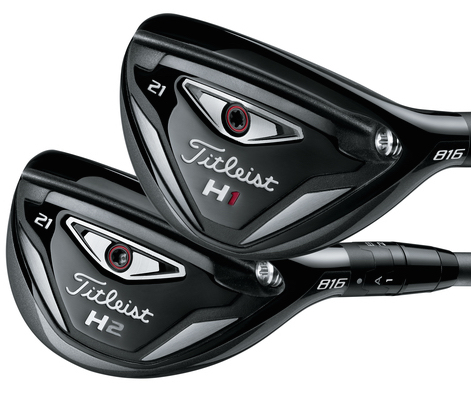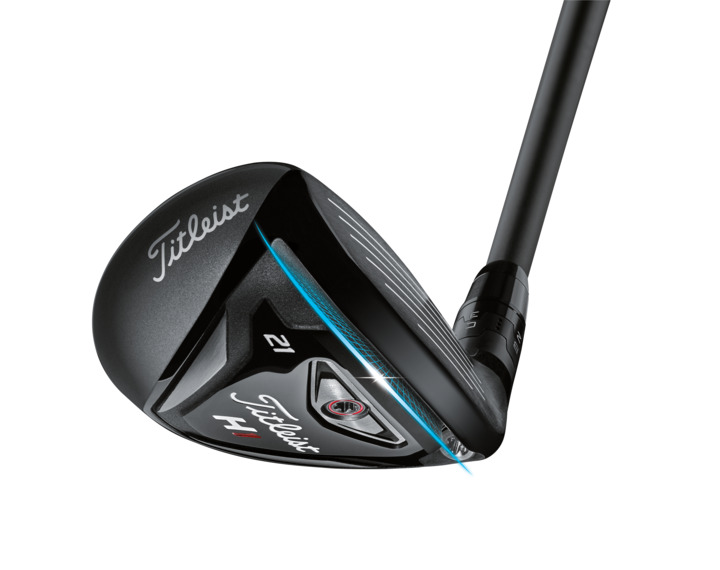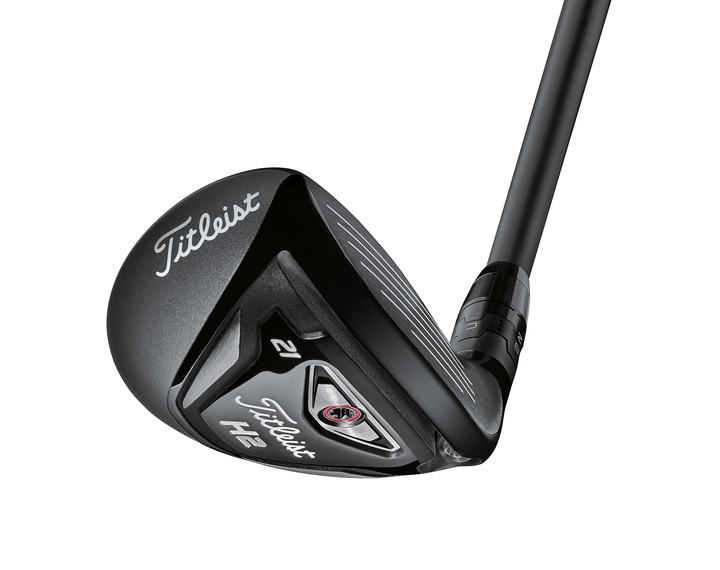Equipment
Latest > The Titleist 816 H1 and H2 Hybrids
Sep 22nd, 2015
The Titleist 816 H1 and H2 Hybrids
Why ever hit a long iron again?
Words: Daniel Owen Photography: Joseph Donahue
£205
Titleist have switched things up with the launch of the 816 H1 and H2 hybrids. Realising that hybrids need to be gapped distance wise with a set of irons, they've switched the release schedule to come out the same time as the irons rather than with the driver and irons.

The two models are quite distinct. Rather than be based on ability levels, the hybrid you choose will be down to the way you play the shot. If you play a hybrid off the front foot, and sweep the ball off the grass more like you would play a fairway wood then the H1 will be the right choice. If you prefer the ball a fraction further back in the stance, and you hit the ball with your hands ahead at impact like an iron the H2 is the way forward. The lines on both heads have been smoothed out, and look better at address than the 915 hybrids, the H1 is a little rounder and bigger, while the H2 has a touch of offset to encourage getting the hands forward at address. The grey finish is a nice change, while the faces are a touch flatter with less bulge and roll so that they play more like an iron.
 Tech wise the Active Recoil Channel – a long, deep channel, being the face, delivers more distance by flexing at impact to launch the ball with lower spin and higher speed. The Active Recoil Channel allows the entire club face to deflect at impact for high speed. It’s is particularly effective on hybrids, which are most often hit off the ground with the ball impacting low on the face. Shots hit lower on the face generally produce more spin, which is counteracted by ARC.
Tech wise the Active Recoil Channel – a long, deep channel, being the face, delivers more distance by flexing at impact to launch the ball with lower spin and higher speed. The Active Recoil Channel allows the entire club face to deflect at impact for high speed. It’s is particularly effective on hybrids, which are most often hit off the ground with the ball impacting low on the face. Shots hit lower on the face generally produce more spin, which is counteracted by ARC.
An ultra thin face works in combination with the Active Recoil Channel to deliver increased ball speed across the entire face. The high-speed, constant thickness face insert, made of high-strength Carpenter steel, is the thinnest face insert Titleist R&D has ever developed.
A precise High-MOI design with a low centre of gravity (CG) location delivers stability and forgiveness by preserving ball speed across the face for distance consistency on off centre hits. (H1’s MOI is 7 percent higher than the previous generation 915H model, while H2 has a similar MOI to the 915Hd.)
The sole of the hybrids have been refined slightly as well, there’s a little bit more camber, they are rounded with more heel and toe relief. Compared to the 915 hybrids it’s not as flat, and this is something we find helps the club get through the rubbish better on less than perfect lies.
I was hitting shots with the H1 and it was very easy to hit. It didn’t stand out though for me, but then why would it. I don’t sweep the ball away with a hybrid, it’s not designed for my type of golf swing. In the right hands I’m sure it would be a great hybrid.
 I was handed the H2 though and had a real eureka moment. The ball just zipped off the face and flew with a flat powerful trajectory that I like to see. It was flying further with less spin, the ball was travelling powerfully, but it was very easy to hit. I loved the 23 degree hybrid. I’d use this as a four iron. I’ve used a hybrid for a four iron for a long time, but some of them hit the ball too high in the air, this still hit’s it on a flat but forgiving trajectory, but I know the ball will get out the rough. With the adjustable Sure-fit hosel, these can really be fine tuned to match your iron set, but are much easier to hit. Why anyone wants to use a long iron anymore, we just don’t know, whack one of these in you bag and start shooting better scores.
I was handed the H2 though and had a real eureka moment. The ball just zipped off the face and flew with a flat powerful trajectory that I like to see. It was flying further with less spin, the ball was travelling powerfully, but it was very easy to hit. I loved the 23 degree hybrid. I’d use this as a four iron. I’ve used a hybrid for a four iron for a long time, but some of them hit the ball too high in the air, this still hit’s it on a flat but forgiving trajectory, but I know the ball will get out the rough. With the adjustable Sure-fit hosel, these can really be fine tuned to match your iron set, but are much easier to hit. Why anyone wants to use a long iron anymore, we just don’t know, whack one of these in you bag and start shooting better scores.
The stock shaft lineup includes the Mitsubishi Diamana D+ White 90 (low/mid launch), Mitsubishi Diamana S+ Blue 70 (mid launch), Mitsubishi Diamana M+ Red 60 (high launch) and Mitsubishi Diamana M+ Red 50 (high launch).
Aldila Rogue complements the Diamana range with the Aldila Rogue Black 85 (mid-launch), and now the Aldila Rogue Silver 85 (low/mid launch).
